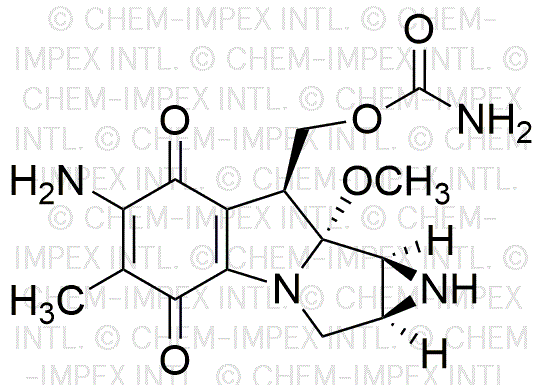Mitomycin C from Streptomyces caespitosus powder is widely utilized in research focused on:
- Cancer Treatment: This compound is primarily used in chemotherapy regimens for various cancers, including bladder and breast cancer, due to its ability to inhibit DNA synthesis in rapidly dividing cells.
- Antibiotic Applications: It has been explored for its antibacterial properties, particularly against certain strains of bacteria, making it useful in developing new antibiotic therapies.
- Gene Therapy Research: Researchers utilize Mitomycin C to study gene expression and regulation, as it can induce DNA damage, allowing for insights into cellular repair mechanisms.
- Cell Cycle Studies: It serves as a valuable tool in cell biology to investigate the effects of DNA cross-linking on cell cycle progression, helping to understand cellular responses to DNA damage.
- Combination Therapies: Mitomycin C is often used in combination with other chemotherapeutic agents to enhance treatment efficacy, providing a multi-faceted approach to cancer therapy.
General Information
Properties
Safety and Regulations
Applications
Mitomycin C from Streptomyces caespitosus powder is widely utilized in research focused on:
- Cancer Treatment: This compound is primarily used in chemotherapy regimens for various cancers, including bladder and breast cancer, due to its ability to inhibit DNA synthesis in rapidly dividing cells.
- Antibiotic Applications: It has been explored for its antibacterial properties, particularly against certain strains of bacteria, making it useful in developing new antibiotic therapies.
- Gene Therapy Research: Researchers utilize Mitomycin C to study gene expression and regulation, as it can induce DNA damage, allowing for insights into cellular repair mechanisms.
- Cell Cycle Studies: It serves as a valuable tool in cell biology to investigate the effects of DNA cross-linking on cell cycle progression, helping to understand cellular responses to DNA damage.
- Combination Therapies: Mitomycin C is often used in combination with other chemotherapeutic agents to enhance treatment efficacy, providing a multi-faceted approach to cancer therapy.
Documents
Safety Data Sheets (SDS)
The SDS provides comprehensive safety information on handling, storage, and disposal of the product.
Product Specification (PS)
The PS provides a comprehensive breakdown of the product’s properties, including chemical composition, physical state, purity, and storage requirements. It also details acceptable quality ranges and the product's intended applications.
Certificates of Analysis (COA)
Search for Certificates of Analysis (COA) by entering the products Lot Number. Lot and Batch Numbers can be found on a product’s label following the words ‘Lot’ or ‘Batch’.
*Catalog Number
*Lot Number
Certificates Of Origin (COO)
This COO confirms the country where the product was manufactured, and also details the materials and components used in it and whether it is derived from natural, synthetic, or other specific sources. This certificate may be required for customs, trade, and regulatory compliance.
*Catalog Number
*Lot Number
Safety Data Sheets (SDS)
The SDS provides comprehensive safety information on handling, storage, and disposal of the product.
DownloadProduct Specification (PS)
The PS provides a comprehensive breakdown of the product’s properties, including chemical composition, physical state, purity, and storage requirements. It also details acceptable quality ranges and the product's intended applications.
DownloadCertificates of Analysis (COA)
Search for Certificates of Analysis (COA) by entering the products Lot Number. Lot and Batch Numbers can be found on a product’s label following the words ‘Lot’ or ‘Batch’.
*Catalog Number
*Lot Number
Certificates Of Origin (COO)
This COO confirms the country where the product was manufactured, and also details the materials and components used in it and whether it is derived from natural, synthetic, or other specific sources. This certificate may be required for customs, trade, and regulatory compliance.


